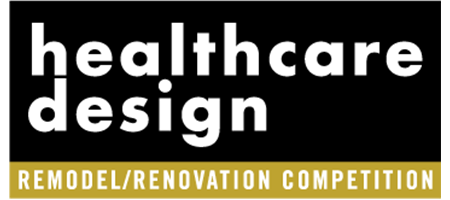When the Sandwell and West Birmingham Hospitals NHS Trust set out to combine the acute care services of its two hospitals in one 10-story, 736-bed facility, it landed on the bank of a canal at a former brownfield site in the Industrial-Revolution-born town of Smethwick, U.K.
The site was home to a factory that as far back as the mid-1800s produced a third of the world’s screws, bolts, and fasteners. “It was quite a historical site that was part of the history of the local area; a lot of the population had worked there or had family members who had,” says Emma Loosley, senior commissioning manager of Sandwell and West Birmingham Hospitals NHS Trust.
MMUH honors the local industrial heritage
As work kicked off on delivering the 861,000-square-foot Midland Metropolitan University Hospital (MMUH), the project team including HKS (architectural project lead; London), Cagni Williams (architectural design lead; London), and Sonnemann Toon Architects (architectural clinical lead; Bicester, U.K.), sought to honor that industrial heritage through the exterior design.
“The architecture is inspired by and expressive of the local industrial heritage and its unique local identity,” says Jane Ho, architect, medical planner, and client liaison at HKS (London).
Building façade features
Specifically, the façade features exposed steel in walls, beams and cross bracings, as well as concrete. Helping to soften the exterior are painted metal elevator cores and louvres, and terracotta cladding with a gray and orange color palette around the middle clinical block and the three patient wards on the upper stack of the building.
The materiality, as well as the stacked modular construction of the hospital, fits in among the old factory buildings that remain along the canal, Ho says.
Further adding to the project’s industrial look is the use of ethylene tetraflouroethylene (ETFE), a lightweight, durable, fluorine-based plastic material often seen in sports stadiums. Here, the material spans over the facility’s winter garden, an all-seasons terrace on the fifth floor that serves as the hospital’s welcome center, as well as six internal planted courtyards between the hospital’s three patient towers.
The covering was selected for its lower cost compared to glass as well as its sustainability benefits in reducing solar gain and diffusing sunlight into the space, Ho says. The design feature also results in nearly every patient room having access to natural light. “It creates a lovely, quite warm environment with good views out that is the central heart of this facility,” she says.
The strategy also enables that “central heart” to serve as a year-round event space within the hospital. “We held the opening ceremony there. They’ve had Christmas carolers there. It’s very much a space for the community,” Ho says.
Robert McCune is senior editor of Healthcare Design. He can be reached at [email protected].











